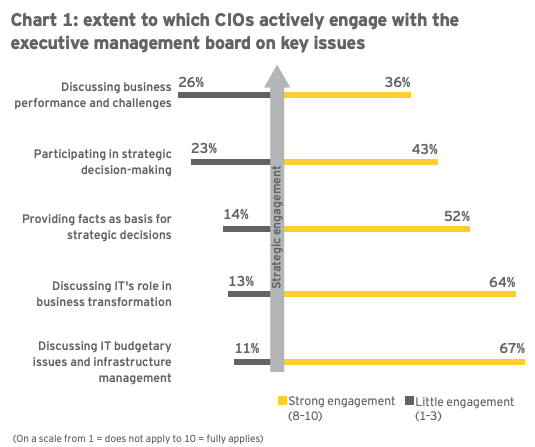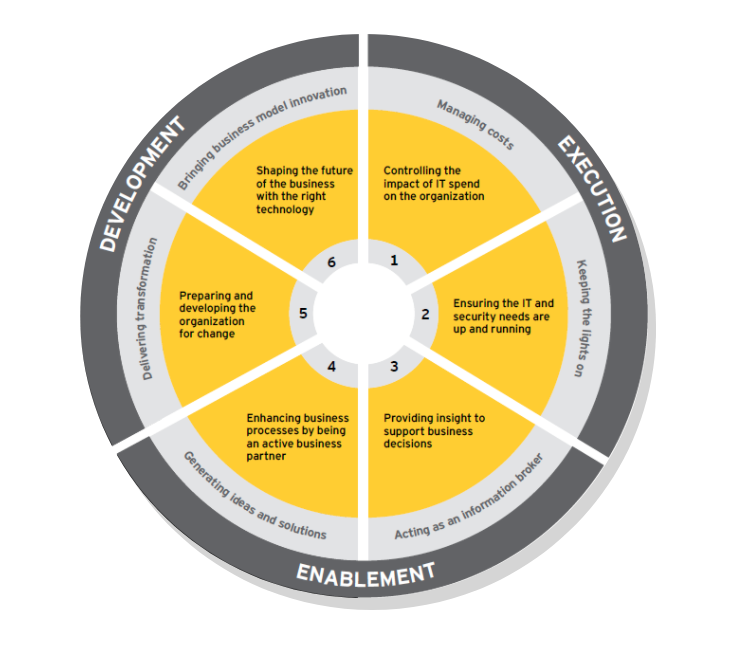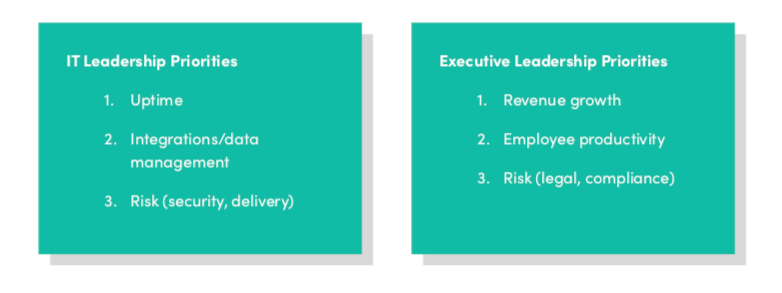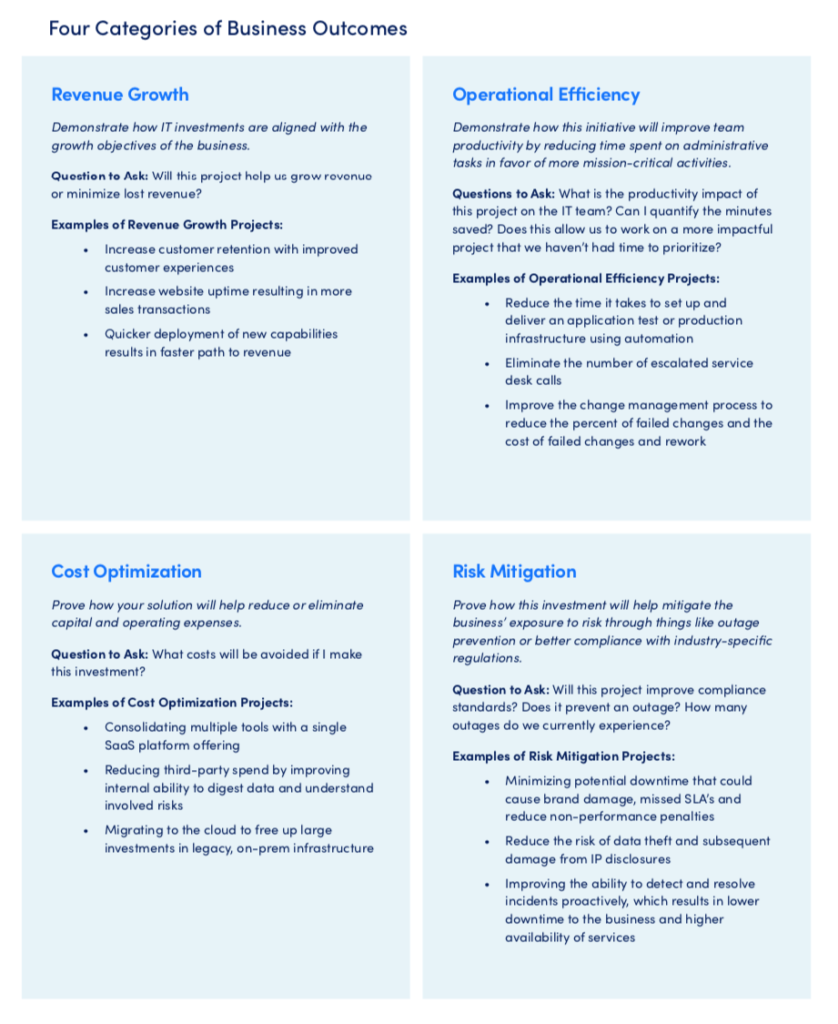There is a value perception gap in IT. It can be a struggle to get past the historical notion that IT is a cost center, rather than a strategic arm of the business.
E&Y recently surveyed 300 senior IT professionals around the globe to understand how they are perceived by their C-level executives. The survey found that 67% of CIOs engage with executive peers on matters of budgetary issues and infrastructure management. Far fewer, only 36%, engage in matters of business performance and challenges. The role of the CIO goes far beyond budget and IT management.


E&Y shows six core elements of the CIO’s role. That not only includes cost management and keeping the lights on but also extends beyond that to preparing and developing the organization for change and enabling business model innovation.


If IT departments are driving such tangible business value, why does this perception gap exist? Oftentimes, the C-suite executives and the CIOs are discussing the same outcomes but using different metrics. It all comes down to identifying the priorities of your business partners and aligning language and milestones to those priorities.
Translating IT Speak Into Business Speak
The good news is that more often than not, the technical priorities and the executive priorities align. It’s just a matter of saying the same thing using a different vocabulary.
Here are a few examples:


If you’re trying to gain buy-in and budget for a new infrastructure monitoring platform to mitigate downtime, focus on how this will increase website uptime. This will result in more sales transactions, thus resulting in increased revenue.
Securing Buy-In and Budget for Your Projects
When thinking about translating your IT projects into business-value focused terms, you should identify the business outcome that best aligns to your project. Generally, all business outcomes fall into four categories: cost optimization, operational efficiency, revenue growth, and risk mitigation.
Cost Optimizations: prove to the business how your solution will help reduce CapEx or OpEx.
Operational Efficiency: demonstrate how this investment will demonstrate team productivity.
Revenue Growth: demonstrate how your project will help accelerate revenue.
Risk Mitigation: prove how this investment will help mitigate the business’ exposure to risk.


While the IT value perception gap may still exist, there’s no denying IT solutions have a huge impact on top-line initiatives. The key is ensuring that IT and executive leadership are in sync. For more tips on how to do this, check out our IT Business Value Guide.



